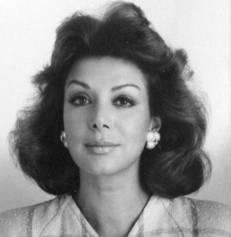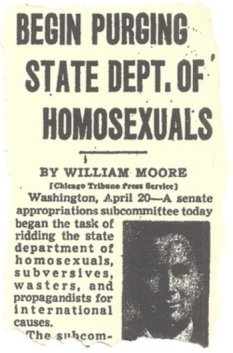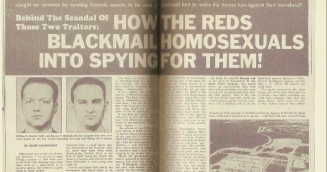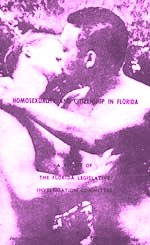
So I may have been inspired by writing about Ronnie Kray recently, but I’ve also found a queer person who basically makes him look like an angel. She is none other than the Cocaine Godmother herself — Griselda Blanco Restrepo. The woman was basically a supervillain straight out of comic books. She was also known as “la Madrina,” “the Black Widow,” and “la Dama de la Mafia.”
Her story doesn’t even start particularly innocently — born on February 14, 1943 in Cartagena, Colombia. Her mother was Ana Lucía Restrepo and her father was Fernando Blanco. When Blanco was three years old, Ana Restrepo moved to Medellín — taking her daughter with her. It was only a few years later that she began her life of crime.
At eleven years old, Blanco kidnapped another child from a wealthy neighborhood and attempted to hold the kid for ransom — and, ultimately, shot the child. Before turning thirteen, Blanco had become an established pickpocket. At sixteen years old, Blanco ran away from home — in order to escape the sexual assaults from her mother’s boyfriend. Now living on the streets, and already familiar with crime, Blanco survived through burglary for the next four years.

Blanco entered into the drug business and rapidly rose to the top — thanks in part to her marriages to Carlos Trujillo (who she allegedly had killed after he was deported from the US) and Alberto Bravo. By the mid-70s, the cartel they’d created together rose to prominence. Bravo and Blanco had moved, using counterfeit passports, to Queens, New York. In 1975, Blanco and 30 of her underlings were indicted on Federal drug conspiracy charges — she and Bravo fled back to Colombia.
Shortly after that, Blanco realized there were millions of dollars missing from the business. She confronted Bravo about the missing money. She drew a handgun on Bravo — who answered by pulling out an Uzi. There was a brief gun battle — during which, Blanco managed to kill Bravo and his six bodyguards while only getting one superficial wound to her abdomen that she quickly recuperated from. With her business partner dead, Blanco now had complete control over her organization. With that power, she decided to thumb her nose at authority and move back to the United States — this time settling in Miami, Florida.
It’s not coincidental that her move to Miami also was about the time that Miami entered a series of extremely violent crime waves. I mean, it wasn’t all her but like, she was an important contributing factor. And these crime waves were so vicious, they’ve been called the “Cocaine Cowboy Wars” or the “Miami Drug Wars” — yeah, wars. And Blanco herself was known for her viciousness — she did things like force people to have sex in front of her at gun point. She murdered her husbands, business partners, business rivals, strippers, and even bystanders — including a kid who was only four years old.

But the fact that Blanco was so terrifying and so successful also gave her some freedoms most people did not enjoy in that time. She was very open about being bisexual, and hosted frequent orgies. She had a wealth of luxurious and glamorous possessions — including a gold and emerald MAC-10 machine pistol, pearls that had belonged to Eva Perón, and a tea set that the Queen of England had used. She was also a drug addict herself, using copious amounts of an unrefined cocaine substance called “basuco.” The drug addiction did weigh on Blanco’s health.
By the mid-80’s, however, Blanco’s violence had brought serious government attention to Miami that was beginning to unravel her organization — her family life wasn’t going so well either. In 1983, her third husband Darío Sepúlveda left her and relocated back to Colombia — kidnapping their child Michael Corleone Blanco. This was a big mistake — Blanco sent someone to kill Sepúlveda and bring the kid back to Miami to be with her. It was probably because of him that she decided she needed to stop the regular attempts on her own life, however, and in 1984 she fled Miami for California.
On February 17, 1985, DEA agents finally arrested Blanco in her California home, and she was held without bail. The Miami-Dade State’s Attorney Office was able to flip one of her subordinates, and gained enough evidence to indict her for three murders — however, a phone-sex scandal involving the star witness and secretaries in the D.A.’s office led to the case falling apart. Blanco continued running her cocaine empire from prison, with help from Michael.
In 2002, Blanco had a heart attack while imprisoned. At some point after that, according to her son, she became a born-again Christian. She was released from prison in 2004, and deported back to Colombia. She kept a low profile for several years, and then — after being seen at the El Dorado International Airport in Bogotá, Colombia — disappeared entirely until September 5, 2012. On that day, she was seen purchasing $150 worth of meat at a butcher shop in Medellín, Colombia — with no explanation as to what she planned to do with that because nobody had seen her anywhere for five years — and then a middle-aged guy on a motorcycle showed up, walked into the shop, and shot her twice. Once in the head. And then he walked out, hopped back on his bike, and drove away. If that leaves you going “wait, what?” trust me, I can relate. But that’s what happened.
Blanco, of course, is legendary. She’s been mentioned in a multitude of rap songs, including twice by Nicki Minaj. She’s been featured in TV shows, including being the focus of an episode of Drunk History where she was portrayed by Maya Rudolph, and has been the focus of three movies in which she’s been portrayed by Catalina Sandino Morena and Catherine Zeta-Jones. There is also an HBO movie in development (since 2016) where Blanco will be played by Jennifer Lopez.
Griselda Blanco was definitely a bad person — but she was really good at it. And she pretty much obliterated any glass ceiling there may have been in the illegal drug smuggling industry. If you were to ignore what she was, y’know, actually doing, that would be pretty admirable.
 In February, 1950 McCarthy announced that he had a list of Communists that worked for the government. Two names on that last were homosexuals who had been fired and then rehired. Senators Kenneth S. Wherry and Senator J. Lister Hill interrogated these two individuals — called “Case 14“and “Case 62“. I can’t find real names for those two, but they were dismissed from their positions — the first official victims of the Lavender Scare. A week later Deputy Undersecretary of State John Purefoy testified before the Senate Committee on Appropriations that the State Department had actually fired, and later hidden, 91 suspected homosexual employees they had flagged as security risks. In truth, the Senate Committee was not shocked to learn this, since they had essentially given the State Department leeway to purge homosexuals from employment in 1946. However, the testimony revealed this information to the public and granted legitimacy to all of McCarthy’s claims — strengthening public support for his Red Scare.
In February, 1950 McCarthy announced that he had a list of Communists that worked for the government. Two names on that last were homosexuals who had been fired and then rehired. Senators Kenneth S. Wherry and Senator J. Lister Hill interrogated these two individuals — called “Case 14“and “Case 62“. I can’t find real names for those two, but they were dismissed from their positions — the first official victims of the Lavender Scare. A week later Deputy Undersecretary of State John Purefoy testified before the Senate Committee on Appropriations that the State Department had actually fired, and later hidden, 91 suspected homosexual employees they had flagged as security risks. In truth, the Senate Committee was not shocked to learn this, since they had essentially given the State Department leeway to purge homosexuals from employment in 1946. However, the testimony revealed this information to the public and granted legitimacy to all of McCarthy’s claims — strengthening public support for his Red Scare.

 McCarthy effectively convinced the government and the media of a connection between homosexuality and Communism — calling them both “threats to the American way of life” and even blatantly telling reporters “if you want to be against McCarthy, boys, you’ve got to be either a Communist or a cocksucker.” He repeatedly referred to homosexuality as an invasion. The rhetoric caught on. Those who’d been removed from their jobs found it impossible to get hired anywhere else — a few resorted to suicide. Federal investigators later covered up most of those deaths.
McCarthy effectively convinced the government and the media of a connection between homosexuality and Communism — calling them both “threats to the American way of life” and even blatantly telling reporters “if you want to be against McCarthy, boys, you’ve got to be either a Communist or a cocksucker.” He repeatedly referred to homosexuality as an invasion. The rhetoric caught on. Those who’d been removed from their jobs found it impossible to get hired anywhere else — a few resorted to suicide. Federal investigators later covered up most of those deaths. Between 1947 and 1961, more Federal employees had been fired for being suspected of being homosexual than were fired for being suspected of being Communist. Records of the number of people who were fired as part of the Lavender Scare get more than a little fuzzy after that, but it was hardly over. Even after the end of McCarthy’s career in 1957, the tactics used in the Lavender Scare remained in effect for several more years. In fact, the Florida Legislative Investigation Committee (aka the Johns Committee after state senator Charley Eugene Johns) officially began using these same practices to drive the queer population out of state universities in 1958. They pursued students and professors for doing such suspiciously homosexual behaviors as wearing Bermuda shorts on campus. Professors were immediately removed from their positions for even being suspected on queerness, students were allowed to remain on campus only if they routinely visited their school’s medical facility for routine psychological treatments. In 1964 the Committee began printing pamphlets entitled Homosexuality and Citizenship in Florida — or colloquially known as the Purple Pamphlet. Because it included pictures of homosexual activity, it was immediately considered controversial and called “state-sponsored pornography” — ultimately leading to the dissolution of the Committee in 1965.
Between 1947 and 1961, more Federal employees had been fired for being suspected of being homosexual than were fired for being suspected of being Communist. Records of the number of people who were fired as part of the Lavender Scare get more than a little fuzzy after that, but it was hardly over. Even after the end of McCarthy’s career in 1957, the tactics used in the Lavender Scare remained in effect for several more years. In fact, the Florida Legislative Investigation Committee (aka the Johns Committee after state senator Charley Eugene Johns) officially began using these same practices to drive the queer population out of state universities in 1958. They pursued students and professors for doing such suspiciously homosexual behaviors as wearing Bermuda shorts on campus. Professors were immediately removed from their positions for even being suspected on queerness, students were allowed to remain on campus only if they routinely visited their school’s medical facility for routine psychological treatments. In 1964 the Committee began printing pamphlets entitled Homosexuality and Citizenship in Florida — or colloquially known as the Purple Pamphlet. Because it included pictures of homosexual activity, it was immediately considered controversial and called “state-sponsored pornography” — ultimately leading to the dissolution of the Committee in 1965.

